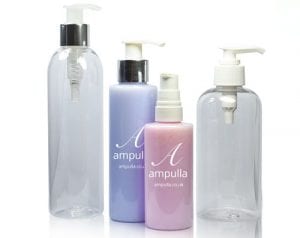
We all know that plastic is notoriously not recycled enough in the UK, with only 44.9% of plastic waste being recovered or recycled in 2016. But why are we not recycling all of our plastic packaging? After all, it’s never been easier to recycle your home and business waste! You can request recycling bins from your local council and there are also plenty of recycling centres around the country that collect the things that your council will not. There is no excuse to send your recyclable waste to landfill! The confusion often lies in the sheer amount of different types of recyclable plastic. How are you supposed to know if your packaging is recyclable or not?
All packaging labels should indicate whether or not the plastic packaging is recyclable or not, which is usually signified by a number.
Plastic Codes
There are 7 codes of plastic that you need to look out for when disposing of your packaging.
1 – PET or PETE (polyethylene terephthalate)
Used for single use, clear plastic drinks bottles, fruit containers, ready meal food trays and polyester textile fibres.
2 – HDPE (high density polyethylene)
Used for milk bottles, shampoo bottles, margarine tubs and household cleaning bottles.
3 – V (Vinyl) or PVC
Used for shower curtains, children’s toys, detergent bottles and medical equipment.
4 – LDPE (low density polyethylene)
Used for carrier bags and squeezy bottles.
5 – PP (polypropylene)
Used for food pots, bottle tops, yogurt pots and sauce bottles.
5 – PS (polystyrene)
Used for meat packaging trays and egg cartons.
7 – O (other)
This category refers to all other plastics that are not listed above.
Types Of Recyclable Plastic
So which of the plastic codes above can be put into your recycling system? PET and HDPE plastics are by far the most commonly used in the UK, and they are both fully recyclable. At least 92% of local councils collect PET and HDPE bottles, but some areas do not collect certain forms of PET and HDPE (such as food trays and tubs) due to issues with sorting, so it’s best to check online with your local council to confirm this. PVC is not collected by councils, so you must dispose of this material independently. Some plastic lumber makers accept PVC, so it’s a great idea to find one nearby if you are going to be regularly using this material. Usage of PVC packaging is generally declining due to it’s non-recyclability.
LDPE carrier bags are now often collected by supermarkets for recycling, but it is generally not accepted through local council bin collections. Some recycling centres do accept it, if they have mixed plastic recycling facilities. The same applies for PP and polystyrene plastics. Plastics that fit into code 7 consist of a variety of different plastic structures. You will need to check which plastic you have (this may be indicated on the brand label) in order to know what you can do to dispose of it responsibly. Some code 7 plastics, such as PLA, are even compostable!
Here at Ampulla, we have a wide range of plastic packaging products available for individuals and both small and large businesses to use. With no minimum order and discounts on the price per unit when you buy in larger quantities, you can be sure that you’re getting the best value! Take a look at our full range of plastic packaging, including jerry cans, bottles and tubs here.
To Find Out More
We hope that you’ve found this short guide to types of recyclable plastic and plastic codes useful and that you will stop and think before throwing your plastic waste away! If you want to learn more about this subject, then we’ve found that Recycle Now is a great resource for finding out all the information you need about recycling in your area. They have tools to help you find your nearest recycling centre and advice on how to dispose of specific items such as electricals and textiles.
